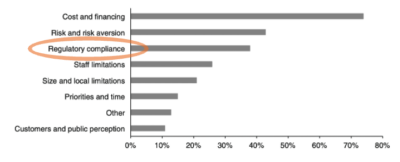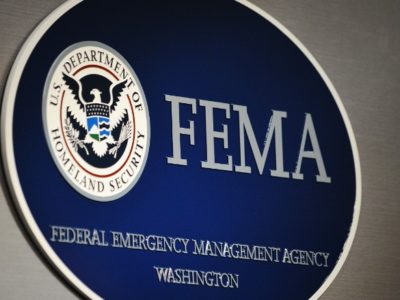A decade of unraveling the effects of regulation on water innovation
By Michael Kiparsky, with Dave Smith, Nell Green Nylen, Luke Sherman, Alida Cantor, Anita Milman, Felicia Marcus, David Sedlak, Bernhard Truffer, Christian Binz, Sasha Harris-Lovett, Jeff Lape, Justin Mattingly, Dave Owen, Lars Tummers, Buzz Thompson
In a recent post, my colleagues and I reported on our most recent research output in a long series of projects examining the effect of regulation on water innovation. The post describes a new framework for understanding and, ultimately, improving relationships between regulators and wastewater utility managers who are seeking to implement novel technical solutions, and is well worth a read. That research caps a decade of empirical work, and gives us a framework on which to build towards the goal of stimulating a culture of beneficial innovation in the wastewater sector.
This post tells the story of how we got to this point, illustrating key themes along the way: the practical value of exploratory research, collaboration, engagement, and the potential for developing a community of practice.
2012: Intuition about innovation
Our first effort on innovation began at the inception of the ReNUWIt program, with an article arguing that there is an innovation deficit in the urban water sector.
That article defined innovation as the development, application, diffusion, and utilization of new knowledge and technology, and argued that innovation is not keeping up with the increasing stressors to the water sector, impairing the sector’s ability to support public and environmental health. Further, innovation is often conceived in narrow terms that emphasize only technological change. We argued that the pathway to innovation lies through institutions, rather than new technology development alone. A range of other work followed this paper, including an influential legitimacy framework for innovation.
2016: Survey as blunt instrument
We dove deeper into the perceptions wastewater managers in California hold about innovation. Figure 1 summarizes their perceptions of barriers to innovation.

This research precipitated a breakthrough when I met Dave Smith, then at US EPA. When I showed him the manuscript, Dave immediately pointed at the third bar in this figure and said “I want to know more about this.”
2020: Survey as scalpel
The EPA Office of Science and Technology and the National Science Foundation ReNUWIt program funded our group to focus on the relationship between regulation and innovation. Our team designed parallel national surveys to examine the views of regulators and wastewater utility managers about this nexus.

Our first set of results from these surveys focused on utility managers’ responses. The analysis disentangled the concept of regulation into several component parts: regulatory requirements, regulatory relationships, and the regulatory environment (Table 1). Our results contradicted anecdotal expectations on a crucial point: utility managers did not think reducing regulatory stringency would do much to encourage innovation. Instead, the results pointed to the importance of regulatory relationships.
2021 – Survey as diagnostic
We then compared utility managers’ perspectives to those of regulators, finding that “regulators and utility managers agree about barriers and opportunities for innovation in the municipal wastewater sector.” This result challenges another widely held assumption, that the two communities hold oppositional views on innovation. This matters because the successful adoption of new technologies requires support from both regulators and utilities. The assumption of conflict can, in and of itself, hinder cooperation. By challenging a destructive trope of conflict, this work points the way to potential actions to improve the relationships between regulators and those they regulate.
2023 – At the (new) starting line
That brings us to the present.
The work that opened our story provided us with a novel empirical look at the innovation process. More importantly, it set us up perfectly to make good on the ultimate goals of this research – using research insights to catalyze shifts in practice, ideally helping thought leaders, and practitioners more broadly, act differently in service of beneficial innovation. Regulatory relationships are a key doorway for creating this change.
So we are off once again. Our current goal is to pivot from in-depth research to designing strategies and tools for empowering regulatory agencies, wastewater utilities, and other interested stakeholders to engage effectively in regulatory processes around innovative technologies and approaches. Our team is currently building on our catalog of research and other related work. US EPA and ReNUWIt have doubled down by committing seed funding for us to map out a concerted effort to implement the insights we have developed over the past decade. We are now working to challenge inaccurate assumptions of inherent opposition between regulation and innovation. We are applying our insights through engagement with a range of key stakeholders, and collectively examining a more collaborative approach to permitting.
Ultimately, bounded flexibility, with both words carrying essential weight, may be the key to enabling utilities to do things differently, to social and environmental benefit. Ideally, this work will enable wastewater utilities to serve their communities more effectively, at a lower cost, and, often, with multiple co-benefits. Improving regulatory relationships is a critical pathway for actualizing this vision, and we believe we have identified key strategies to help make that happen. Stay tuned for more as we expand our engagement on this topic.
Onwards!
This post reports on efforts to examine regulation and innovation in the municipal wastewater sector, funded by US EPA and the National Science Foundation ReNUWIt Engineering Research Center. Support from a range of industry groups was crucial, including National Association of Clean Water Agencies (NACWA), the Water Research Foundation (WRF), the Water Environment Federation (WEF), the California Association of Sanitation Agencies (CASA), and state and regional chapters of the Water Environment Association (WEA).
References:
Nell Green Nylen, Michael Kiparsky, and Anita Milman. 2022. Cultivating effective utility-regulator relationships around innovation: Lessons from four case studies in the U.S. municipal wastewater sector. PLOS Water 1(8): e0000031. https://doi.org/10.1371/journal.pwat.0000031
Luke Sherman, Alida Cantor, Anita Milman, and Michael Kiparsky. 2020. “Examining the complex relationship between innovation and regulation through a survey of wastewater utility managers.” Journal of Environmental Management 260: 110025, https://doi.org/10.1016/j.jenvman.2019.110025
Alida Cantor, Luke Sherman, Anita Milman, and Michael Kiparsky. 2021. “Regulators and utility managers agree about barriers and opportunities for innovation in the municipal wastewater sector.” Environmental Research Communications 3: 031001, https://doi.org/10.1088/2515-7620/abef5d
Michael Kiparsky, Christian Binz, Barton H. Thompson, Jr., Bernhard Truffer, David L. Sedlak and Lars Tummers. 2016. “Barriers to innovation in urban wastewater utilities: Attitudes of managers in California.”Environmental Management 57(6): 1204-1216, doi: 10.1007/s00267-016-0685-3
Christian Binz, Bernhard Truffer, Sasha Harris-Lovett, Michael Kiparsky and David L. Sedlak. 2015. “The thorny road to technology legitimation – Institutional work for potable water reuse in California.” Technological Forecasting and Social Change 103: 249–263, doi:10.1016/j.techfore.2015.10.005
Sasha Harris-Lovett, Christian Binz, David L. Sedlak, Michael Kiparsky and Bernhard Truffer. 2015. “Beyond User Acceptance: A Legitimacy Framework for Potable Water Reuse in California.” Environmental Science & Technology 49(13): 7552–7561, DOI: 10.1021/acs.est.5b00504
Eric Rosenblum, Felicia Marcus, Robert Raucher, Bahman Sheikh, and Shannon Spurlock. 2022. Multi-agency Water Reuse Programs: Lessons for Successful Collaboration. US EPA. https://www.epa.gov/system/files/documents/2022-03/multi-agency_water_reuse_programs-lessons_for_successful_collaboration_march_2022.pdf







Reader Comments